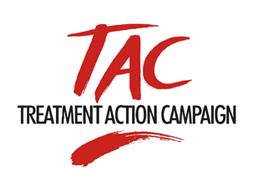Dear Ambassador Froman,
The Treatment Action Campaign (TAC) of South Africa is extremely concerned with recent attempts by the US government to discourage and curb the globe’s supply of affordable generic medicines available from India. Specifically, we object to the placement of India on the US ‘Special 301 Watch List’ over objections to the country’s intellectual property system, as well as subsequent condemnation from Members of Congress stemming from US pharmaceutical industry pressure, and attempts by a group of US commercial businesses (under the banner of ‘Alliance for Fair Trade with India’) to influence Vice President Biden’s current meetings in India.
Through the development of its effective generic manufacturing industry, India has become an essential source of affordable medicines, producing over 80% of medicines, and as many as 90% of paediatric medicines used in the developing world[1]. The historic scale up of antiretroviral treatment has reached over 8 million people in the developing world with life saving HIV treatment (ARVs) –including 2 million people in South Africa. But this breakthrough has only been possible due to major price drops achieved through the introduction of generic competition. Prices reduced from initial unaffordable levels of as much as US $10,000ppy in the 1990s to less than US $139ppy[2] for a standard first-line HIV regimen used in the public sector today. The United States has played a key role, but the goal of an “AIDS-Free Generation”[3] affirmed by President Obama during his last State of the Union Address is heavily dependent on sustaining the supply of Indian-produced generic medicines that constitute the vast majority of drugs used by PEPFAR, the Global Fund and the governments of developing countries.
Despite a variety of voluntary and tiered pricing mechanisms, the cost of originator pharmaceutical ARVs continues to vastly exceed generic equivalents, for example the generic options of the one-pill-a-day combination (TDF/FTC/EFV) are considerably cheaper at $158 than the originator company versions, which have remained constant since 2007 at $613 for low-income countries, and $1,033 for lower middle-income countries[4]. Competition has been the single most effective method of delivering affordable prices for essential health commodities.
The attack currently being faced by India from the US government is illustrative of domestic industry interests pushing to repeal prior U.S. global agreements[5] and violates the spirit of specific commitments made to Africa[6], and once again protects commercial interests at the expense of public health. Following the landmark cases pertaining to imatinib (Glivec) and sorafenib (Nexavar) there has been pressure on India to increase intellectual property protections despite the fact that in both instances India acted in compliance with the WTO’s agreement on Trade Related Aspects of Intellectual Property Rights (TRIPS).
Through strict patentability criteria outlined in Section 3(d) of the Indian Patents Act which grants new patents only to medicines with enhanced efficacy, India has avoided granting excessive monopolies for secondary use, combinations or mere minor incremental changes. The recent Supreme Court decision in India defended the validity of Section 3(d) by denying Novartis’ appeal for a patent on a new form of Glivec. The absence of a patent on Glivec in India created a competitive market where the drug rapidly became available for 94% less than the originator equivalent, now at an affordable US $17 per month[7].
When India’s Intellectual Property Appellate Board (IPAB) upheld a compulsory license on Nexavar despite heavy pressure from Bayer, the price quickly plummeted from US $5,500 per month to US $175 per month[8] – ensuring patients were able to start accessing this crucial cancer drug. It would be hypocritical of the US government to condemn this legal action after the Bush Administration threatened to utilise this same flexibility to produce a stockpile of ciprofloxacin (Cipro)–enough to treat 10 million people in the face of an Anthrax scare in 2001[9].
In South Africa, the combination of low patentability criteria and the lack of an effective patent examination system have lead to excessive patenting in the country, maintaining artificially high prices on newer, more effective medicines and blocking generic equivalents from entering the market. Increasingly, equitable access to important newer medicines are priced out of reach for the public sector; sorafenib is currently produced only for the South African private health sector at a cost more than 23 times the price of the Indian equivalent[10]. Restrictions on India would amplify such problems on a disastrous global scale.
The negotiated flexibilities built into the TRIPS agreement allow countries to adopt fair pro-public health policies that protect lives. Traditionally, the pharmaceutical sector has argued against these flexibilities in order to maintain excessive monopoly protection and thus higher commercial reward, claiming that high premiums are essential to drive effective medical innovation–however even proponents of the sector have established that these huge price tags around R&D are “one of the great myths of the industry”[11]. Even using industry assertions, pharmaceutical related R&D spending by the private sector was less than 8 percent of global sales in 2010.[12]
The US government is the largest funder of AIDS programs worldwide through PEPFAR – which procures 98% of its medicines from generic manufacturers globally. Instead of threatening India with trade sanctions, the US must recognise that any restrictions on Indian generic manufacturing would invariably lead to significant increases in medical procurement costs and ultimately less value for money within US aid budgets. In regard to HIV, the effect of this would become increasingly apparent as the epidemic ages, when increasing numbers of people are put on life-long antiretroviral treatment, and more people living with HIV need to be switched to more expensive 2nd and 3rd line regimens. In stark contrast to the recommendations of the US Blueprint to end AIDS, an increase in medicine prices would deny any opportunity for the global community to reach a tipping point in the epidemic, where treatment initiation outpaces new infections.
At a time of budget deficits and funding cuts, additional costs must not be incurred to restrict access to life-saving medicines that millions of people rely on around the world. We urge the US government to stand strong against pressure from the pharmaceutical lobby and actively support and applaud enabling policies that ensure that India, the ‘pharmacy of the developing world’, can continue to produce affordable generic medicines that so many of us rely on to stay alive.
Yours sincerely,
Anele Yawa
Treatment Action Campaign Chairperson
















